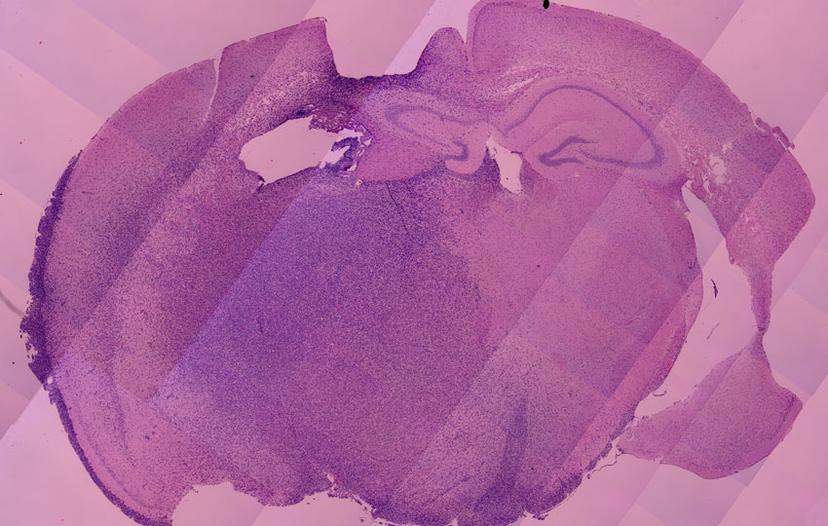Researchers Deplete Cancer Stem Cells to Fight Recurring Brain Tumors
Brain cancer researcher, Dr. Raffaella Spina, explains cancer recurrence in glioblastomas and her approaches to fighting it in the laboratory
30 May 2017


Dr. Raffaella Spina Dr. Spina is a brain cancer researcher at the Case Western Reserve University School of Medicine. After completing her Ph.D. in Molecular Oncology and Experimental Immunology, her primary focus for the past nine years has been the cellular and molecular biology of pediatric and adult brain tumors. As a postdoctoral researcher in the laboratory of Dr. Eli E. Bar, she studies cellular heterogeneity in tumors and tumor microenvironment.
The glioblastomas are the most stubborn and aggressive of brain cancers. Referred to as glioblastoma multiforme, this form of grade IV brain tumor is considered malignant. Once diagnosed, doctors surgically remove the tumor from the brain, and prescribe concurrent radiation and oral chemotherapy for the weeks that follow.
Even with these efforts, the cancer returns. With no definite cure, patients tend to succumb to glioblastomas in about one year.
Dr. Raffaella Spina, a cancer researcher at the Case Western Reserve University, studies glioblastomas. In this interview with SelectScience®, she explains the source of cancer recurrence and her recent efforts to tackle glioblastoma in a lab.
Cancer stem cells: the source of tumor recurrence
The resistance to current therapies and tumor recurrence in cancer can be attributed to a source — cancer stem cells. In glioblastoma, these cells are called glioblastoma stem cells (GSCs) and this is the focus of Dr. Spina’s research.
The GSCs, possessing properties of stem cells, have the capacity to produce progeny cells, some of them cancerous. Surgical removal of the tumor may not clear the GSCs, causing future recurrence of the cancer. Dr. Spina and her academic advisor, Dr. Eli E. Bar, have one goal: finding a way to wipe out these cancer stem cells.
Approach 1. Controlling the progenies of cancer stem cells
While many laboratories examine the properties of the GSCs themselves, Dr. Spina and her colleagues took a different approach — to study the progenies of the cancer stem cells.
Forcing the cancer stem cells to differentiate into non-cancerous progeny cells can deplete the GSC pool without the risk of cancer recurrence. “One approach our group has been studying for the past several years is aimed at promoting the astroglial differentiation,” says Dr. Spina. She studied the progenies of the GSCs, i.e. astrocytes and neurons, and identified them using specific reporters — glial fibrillary acidic protein (GFAP) for astrocytic differentiation, and microtubule-associated protein-2 (MAP-2) for neuronal differentiation. When the GSCs differentiated to astroglial-like cells (GFAP-positive), these progenies showed reduced tumorigenic capacities, both in vitro and in vivo. These benefits, however, weren’t observed with the neuronal (MAP-2 positive) progenies.
Molecules that can control cancer stem cells’ fate
In the next step, a drug screening ensued to identify different small molecules that can differentiate cancer stem cell pools into solely astroglial progenies. A neuromuscular blocker, atracurium besylate, emerged as the top candidate as it induced the GSCs into only astroglia and not neurons. “Our most clinically relevant results show that astrocytic differentiation, induced by Atracurium Besylate, is associated with reduced GSC self-renewal in vitro, and reduced the capacity to initiate cancer in orthotopic xenografts in vivo,” summarizes Dr. Spina. “We propose that targeting cancer stem cells with therapies that induce their differentiation can reduce the fraction of cancer stem cells capable of brain tumor initiation, and thereby, inhibit tumor progression.”
A high-throughput screening platform
To monitor the astroglial differentiation (i.e. GFAP-positive progenies) during the small-molecule screen, Dr. Spina performed flow cytometry using MilliporeSigma's benchtop flow cytometer. “In our latest publication, Spina et al., Oncotarget, 2016[1], the Guava 5HT flow cytometer allowed us to establish a high-throughput screening platform. This helped us identify small molecules capable of inducing astroglial differentiation of GSCs, based on GFP expression driven by the promoter of human GFAP,” adds Dr. Spina. “It is a reliable, accurate and user-friendly flow cytometer with a very intuitive software and an essential instrument in our lab,” she acknowledges. The new molecular targets identified in this project, including atracurium besylate, will be further studied to develop future therapeutic strategies to eradicate GSCs.
Acetylcholine signaling has never before been implicated in glioma stem cell biology.
The new-found link between cancer stem cells and acetylcholine signaling
Atracurium besylate, the small molecule that induces the GSCs to assume an astroglial-only fate, also happens to act as a specific inhibitor of nicotinic acetylcholine receptors (nAChR). Dr. Spina’s findings have now provided an unexplored direct link between acetylcholine signaling and maintenance of “stemness” in cancer stem cells. “Acetylcholine signaling has never before been implicated in glioma stem cell biology. We were the first laboratory to identify this crucial link,” notes Dr. Spina. “We hope that our paper[1]will prompt other laboratories and perhaps pharmaceutical companies to focus on identification of other inhibitors of acetylcholine signaling or downstream targets.”
Approach 2. Making it difficult for cancer stem cells to survive
Another approach to tackle GSCs is to simply make it hard for the cancer stem cells to survive. Thriving in a hypoxic microenvironment, the GSCs rely on the monocarboxylate transporter-4 (MCT4) for their survival[2]. In glioblastoma patients, overexpression of MCT4 was linked with increased rate of the patients succumbing to cancer. Recently, Dr. Spina and the team screened molecules capable of inhibiting MCT4, thereby starving the GSCs. In a recent publication in Scientific Reports[3] (in press), Dr. Spina identified a compound — acriflavine — that obstructed the functioning of MCT-4 by inhibiting its interaction with a closely-associated chaperon.
Tackling stubborn, chemotherapy-resistant tumors
“A tremendous effort in unveiling the molecular basis of chemo- and radiation-resistance is currently being made by the scientific community. A major challenge in decoding mechanisms of resistance is posed by intra-tumoral heterogeneity and cancer stem cells’ plasticity,” reasons Dr. Spina, who was drawn to disease etiology, and the concept of research and experimentation as a college student. “I chose to become a researcher because I have always been interested in understanding how our body works and how this information can be useful in fighting or avoiding illness.”
“Doing research is always fascinating, but at the same time challenging because biology can be very unpredictable,” notes Dr. Spina. “However, it is in these instances where I know novel discoveries can be made. This exciting aspect to research is what nourishes my passion to continue my scientific pursuits and provides me the hope that my efforts will contribute to the development of novel therapies,” she adds. Dr. Spina plans to continue an in-depth analysis of the compounds identified in the small-molecule screening of both projects.
References:
Spina R, Voss DM, Asnaghi L, Sloan A, Bar EE. Atracurium Besylate and other neuromuscular blocking agents promote astroglial differentiation and deplete glioblastoma stem cells, Oncotarget, 2016
Lim KS, Lim KJ, Price AC, Orr BA, Eberhart CG, Bar EE. Inhibition of monocarboxylate transporter-4 depletes stem-like glioblastoma cells and inhibits HIF transcriptional response in a lactate-independent manner, Oncogene, 2014
Voss DM, Spina R, Carter DL, Lim KS, Jeffery CJ, Bar EE. Disruption of the monocarboxylate transporter-4-Basigin interaction inhibits the hypoxic response, proliferation, and tumor progression (#SREP-17-01844A). (In press – Scientific Reports).
Find out more about the Guava 5HT Flow Cytometer and other MilliporeSigma instruments.
Do you use MilliporeSigma instruments in your research? Write a review today for your chance to win an Amazon voucher worth $400 or an iPad.

